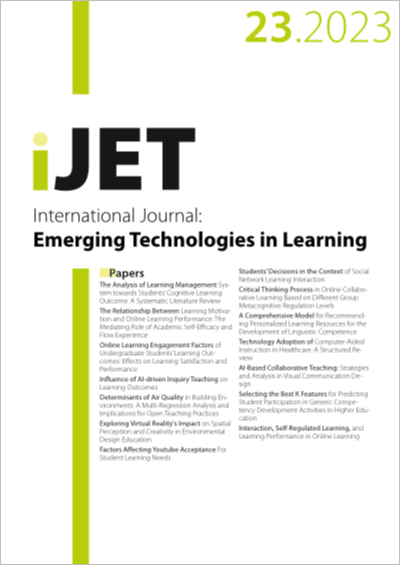Selecting the Best K Features for Predicting Student Participation in Generic Competency Development Activities in Higher Education
DOI:
https://doi.org/10.3991/ijet.v18i23.45499Keywords:
machine learning, education, feature engineering, SelectKBest, KNN, ANNAbstract
Generic competency (GC) is an essential but often overlooked aspect of developing students in higher education. While there is much research about using technologies to develop discipline- specific skills for students, the use of technologies in GC development is insufficient. In particular, more research is needed on using technologies to predict student participation in GC development activities (GCDAs). Machine learning (ML) can use student characteristics, known as features, to predict their involvement in GCDAs. However, too many features will slow down the prediction process and reduce the ability to pinpoint the best features for prediction. This study explored an effective way to identify the minimal number of features essential for predicting student participation in GCDAs. The findings help educators develop recommendation systems to help students select the most beneficial GCDA for their holistic development. We collected 98 features from 9570 students from a community college. Then, we applied the Principal Component Analysis and SelectKBest algorithms to reduce the number of features from 98 to 8. Finally, we compared the accuracy of predictions using KNN and ANN based on the all-feature dataset with those based on the reduced-feature dataset. The results showed that the reduced-feature dataset maintained good prediction accuracy and enabled the educator to recommend the GCDAs to students. The findings could drive further research and development in applying machine learning technologies to enhance the recommendations for GCDAs for higher-education students.
Downloads
Published
How to Cite
Issue
Section
License
Copyright (c) 2023 Adam Ka Lok Wong, Joseph Chi Ho So, Kia Ho Yin Tsang, Ran Wei

This work is licensed under a Creative Commons Attribution 4.0 International License.



